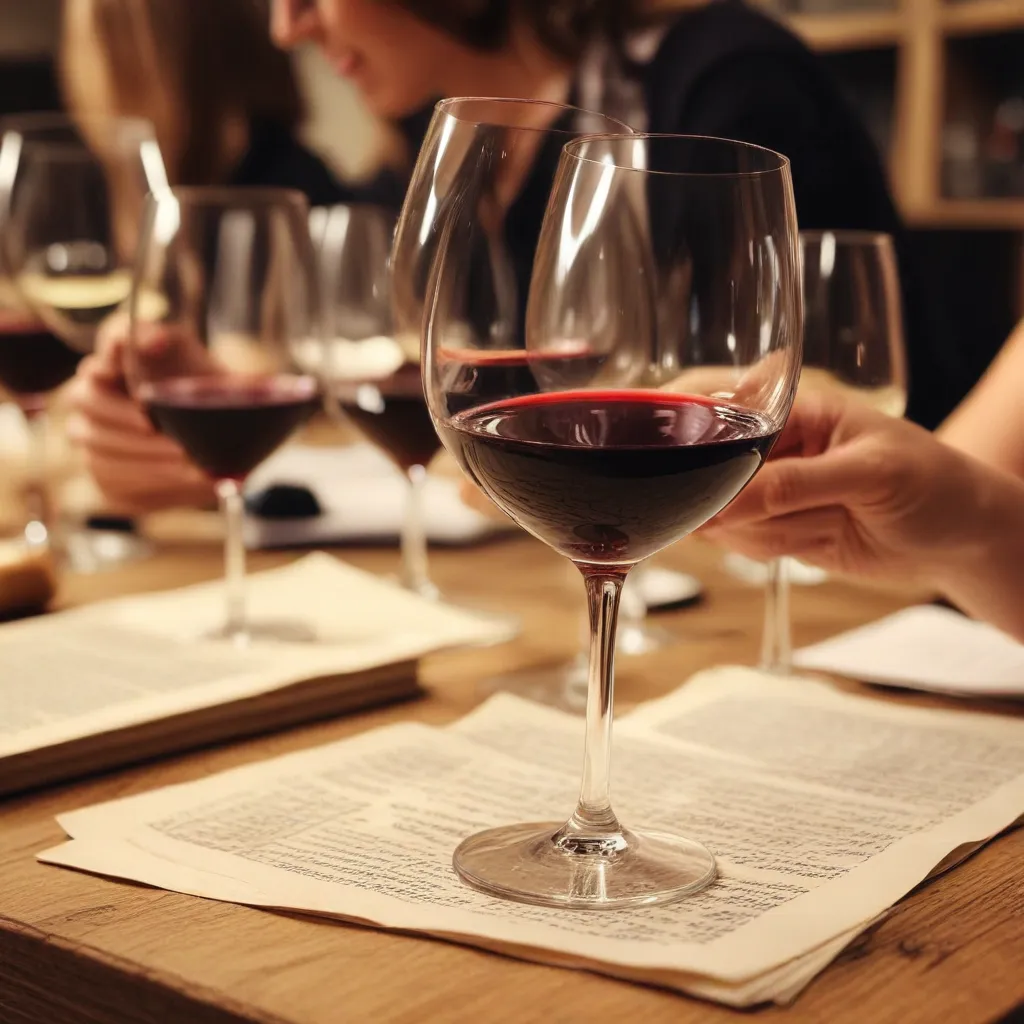
Holding a glass of wine and experiencing its complex flavors and aromas is a highlight for many oenophiles. Yet, translating those sensations into detailed tasting notes can be a daunting task, even for seasoned wine enthusiasts. Whether you’re a novice wine drinker or an avid collector, developing a robust descriptive vocabulary is key to unlocking the full potential of your wine encounters.
Understanding Wine Tasting Notes
At their core, wine tasting notes are a means of capturing and communicating the unique characteristics of a particular wine. These nuanced observations can range from broad impressions, like fruity or earthy, to precise descriptors, such as black cherry, graphite, or brioche. Mastering the art of tasting note writing empowers you to not only better appreciate the wines you consume but also to make more informed purchasing decisions.
Descriptive Wine Vocabulary
The foundation of effective tasting notes rests on a diverse vocabulary that allows you to articulate the myriad sensations a wine can evoke. This repertoire goes beyond basic identifiers like “sweet” or “dry” and delves into the specific flavor and aroma profiles.
Think about the last time you encountered a new wine. Perhaps it offered notes of ripe plum, subtle vanilla, and a hint of white pepper. Being able to pinpoint these nuanced characteristics is crucial for understanding the wine’s style and personality.
Identifying Flavor Notes
When assessing a wine’s flavors, consider the broad categories of fruit, spice, herb, floral, and mineral. Within each of these, you can further refine your descriptors. For example, “red fruit” could translate to cherry, raspberry, or cranberry, while “baking spice” may evoke cinnamon, nutmeg, or clove.
Utilizing a wine flavor wheel can be a helpful tool in expanding your vocabulary. These visual aids categorize common wine descriptors, allowing you to identify the specific notes you’re experiencing.
Recognizing Aroma Profiles
In addition to flavors, the aromatic qualities of a wine play a pivotal role in the tasting experience. Swirling the glass and taking a gentle sniff can reveal a wealth of information about the wine’s character.
Is the nose dominated by fresh citrus, dried herbs, or toasted oak? Identifying these bouquets can provide valuable insights into the wine’s grape variety, production methods, and overall style.
Factors Influencing Wine Tasting
Crafting comprehensive tasting notes requires an understanding of the various factors that shape a wine’s sensory profile. From the grape varietals used to the nuances of terroir, each element contributes to the wine’s unique identity.
Grape Varietals
The specific grape or blend of grapes used in a wine’s production can have a profound impact on its flavor and aroma. Cabernet Sauvignon, for instance, is often associated with notes of blackberry, graphite, and cigar box, while Chardonnay can display a range of characteristics, from crisp apple and citrus to rich, buttery tones.
Winemaking Techniques
The choices made by the vintner during the winemaking process also influence the final product. Techniques such as barrel aging, malolactic fermentation, and lees stirring can impart distinctive flavors and textures to the wine.
Terroir and Climate
The concept of terroir, encompassing the unique blend of soil, climate, and geographical factors of a specific growing region, is a crucial consideration in understanding a wine’s profile. The microclimate, elevation, and even the orientation of the vineyards can all contribute to the wine’s aromatic and flavor nuances.
Improving Tasting Note Skills
Honing your ability to compose thoughtful, descriptive tasting notes is a journey of continuous learning and practice. By developing a structured approach and expanding your sensory awareness, you can elevate your wine appreciation and better communicate your experiences.
Developing a Tasting Routine
Establish a consistent tasting ritual to help train your senses. Begin by visually inspecting the wine’s color and clarity, then move to the nose, taking time to identify and articulate the aromas. Finally, taste the wine, noting the initial flavors, texture, and overall balance.
Practicing Sensory Evaluation
Regular sensory evaluation exercises, such as sniffing different spices, fruits, or herbs, can sharpen your ability to recognize and describe various aromatic and flavor components. Consider keeping a tasting journal to document your impressions and track your progress.
Expanding Descriptive Knowledge
Supplement your practical experiences by reading and learning about the vocabulary of wine tasting. Familiarize yourself with wine-specific terms, such as acidity, tannins, and mouthfeel, to deepen your understanding of the structural elements that contribute to a wine’s character.
Applying Tasting Note Insights
Beyond simply documenting your impressions, thoughtful tasting notes can serve as a valuable tool for enhancing your overall wine enjoyment and exploration.
Pairing Wine with Food
Detailed tasting notes can inform your food and wine pairings, helping you identify complementary or contrasting flavors and textures. For example, a wine with pronounced citrus and mineral notes may be an excellent match for a seafood dish, while a bold, tannic red could provide an intriguing counterpoint to a hearty stew.
Appreciating Wine Complexity
As you hone your tasting note skills, you’ll gain a greater appreciation for the nuanced complexity of wine. By recognizing the interplay of various flavor and aroma components, you can unlock a deeper understanding of a wine’s personality and the stories it has to tell.
Enhancing Wine Enjoyment
Ultimately, the ability to craft thoughtful tasting notes is not about snobbery or elitism – it’s about enhancing your overall wine enjoyment. By developing a more refined vocabulary, you can more fully engage with the wines you encounter, whether enjoying a glass at Wine Garden Inn or exploring new vintages at your local wine shop.
So, the next time you pour a glass, take a moment to slow down, engage your senses, and let the wine’s unique characteristics unfold. With practice and a bit of curiosity, you’ll soon find yourself crafting tasting notes that capture the essence of each sip, opening the door to a richer, more rewarding wine experience.
